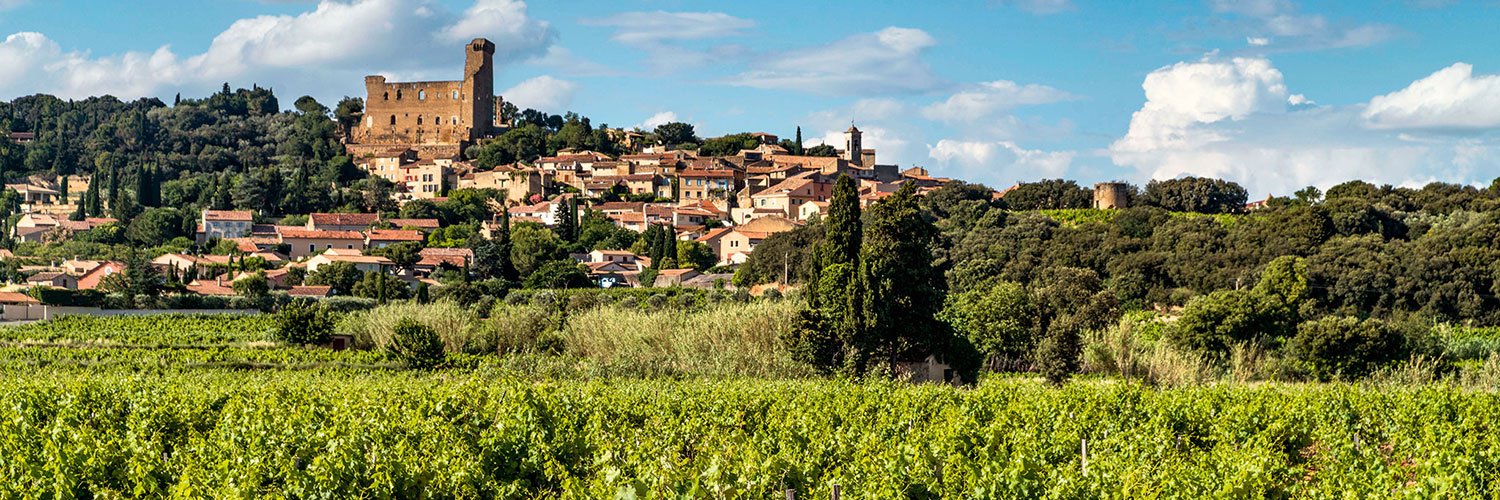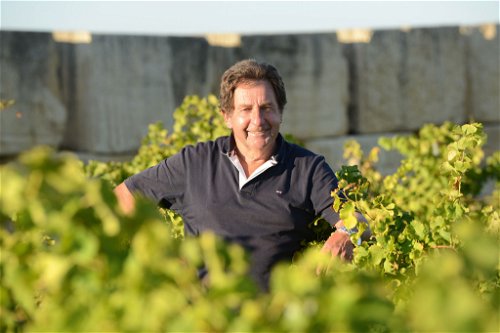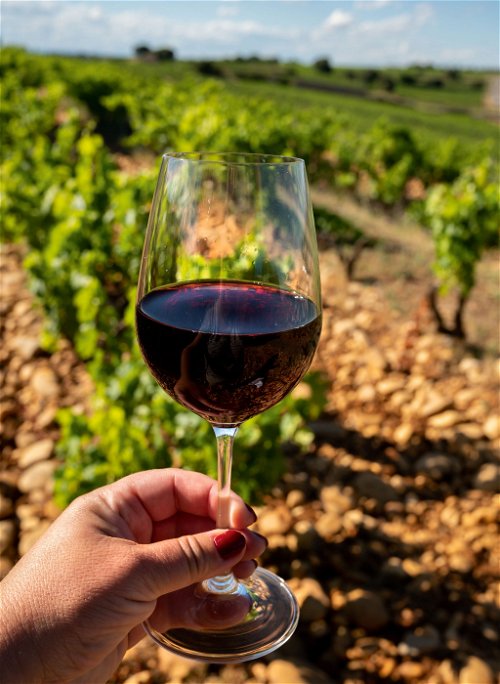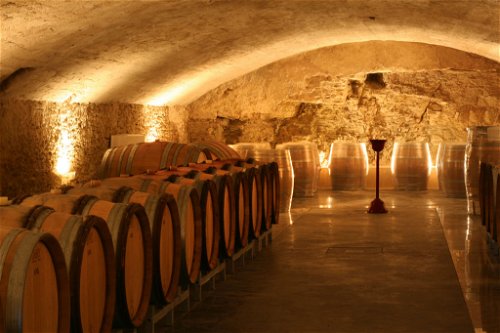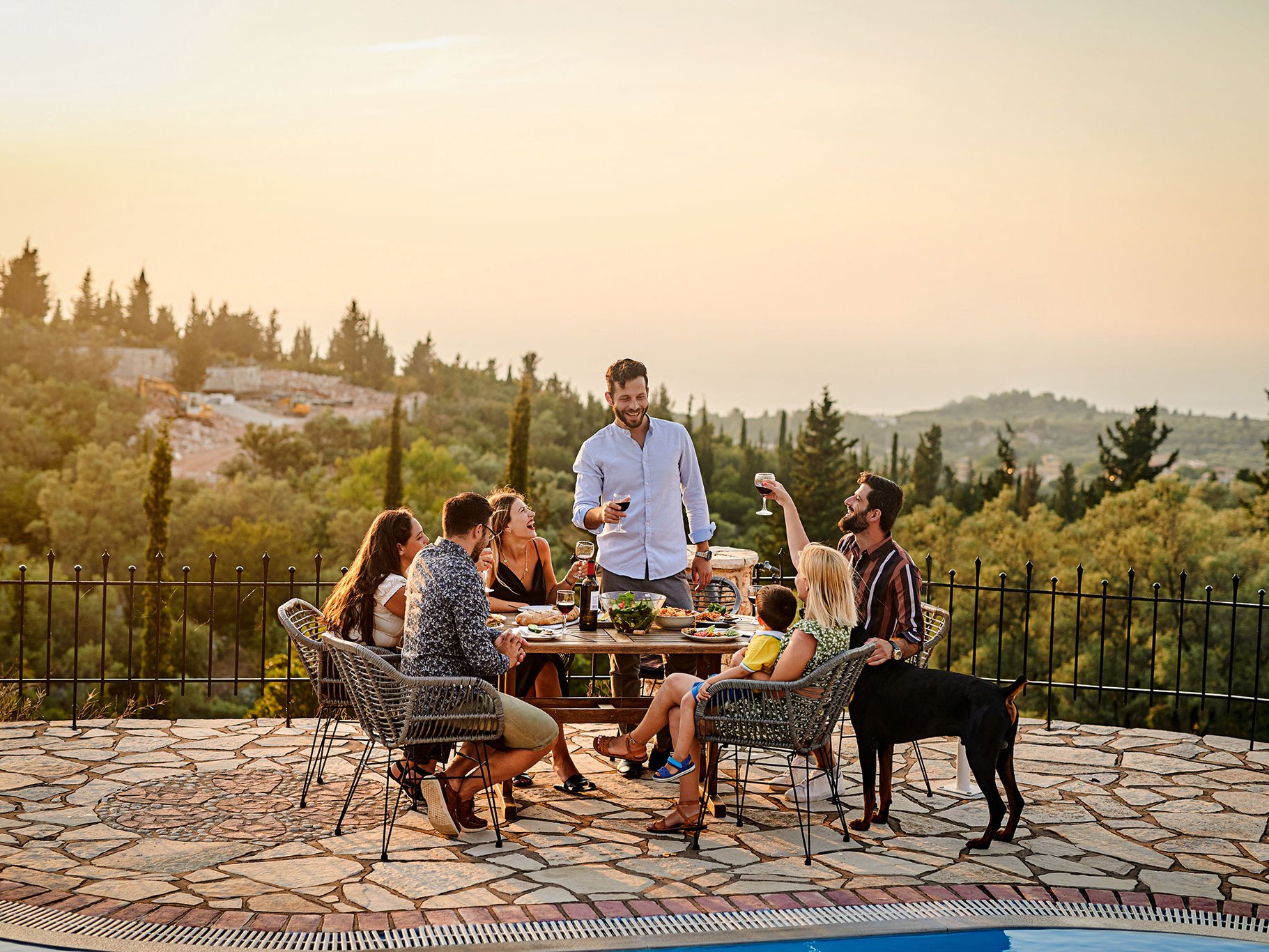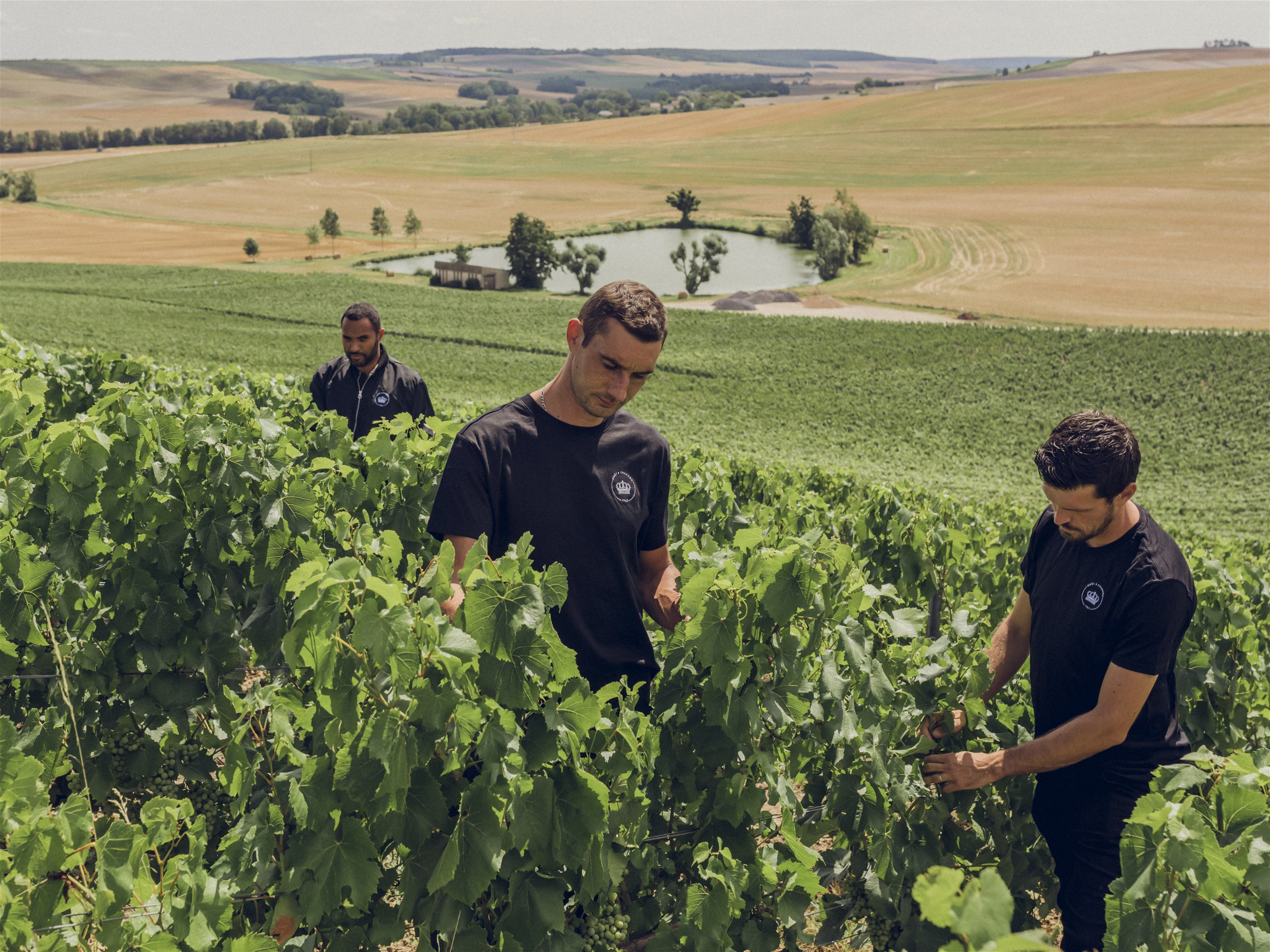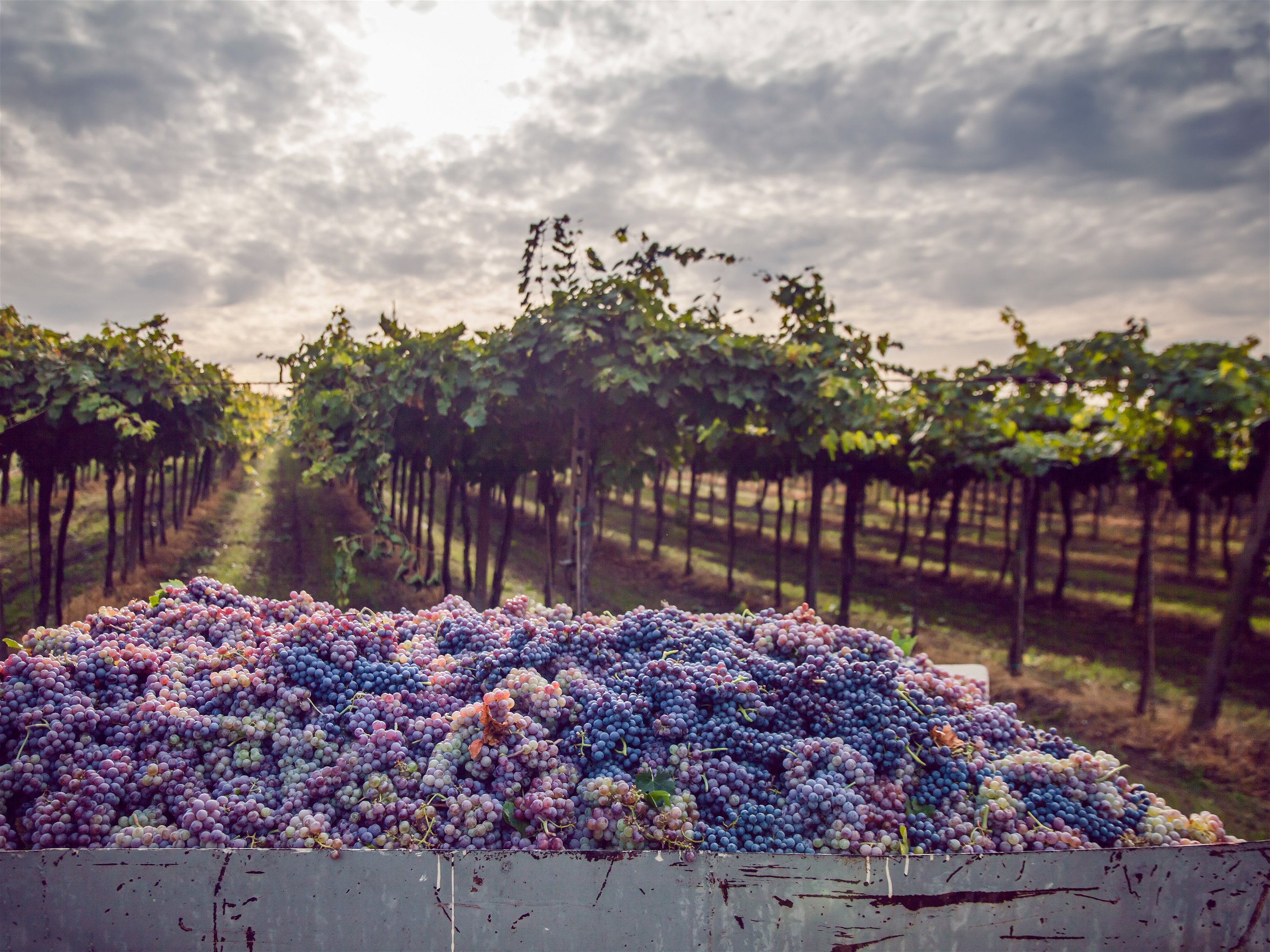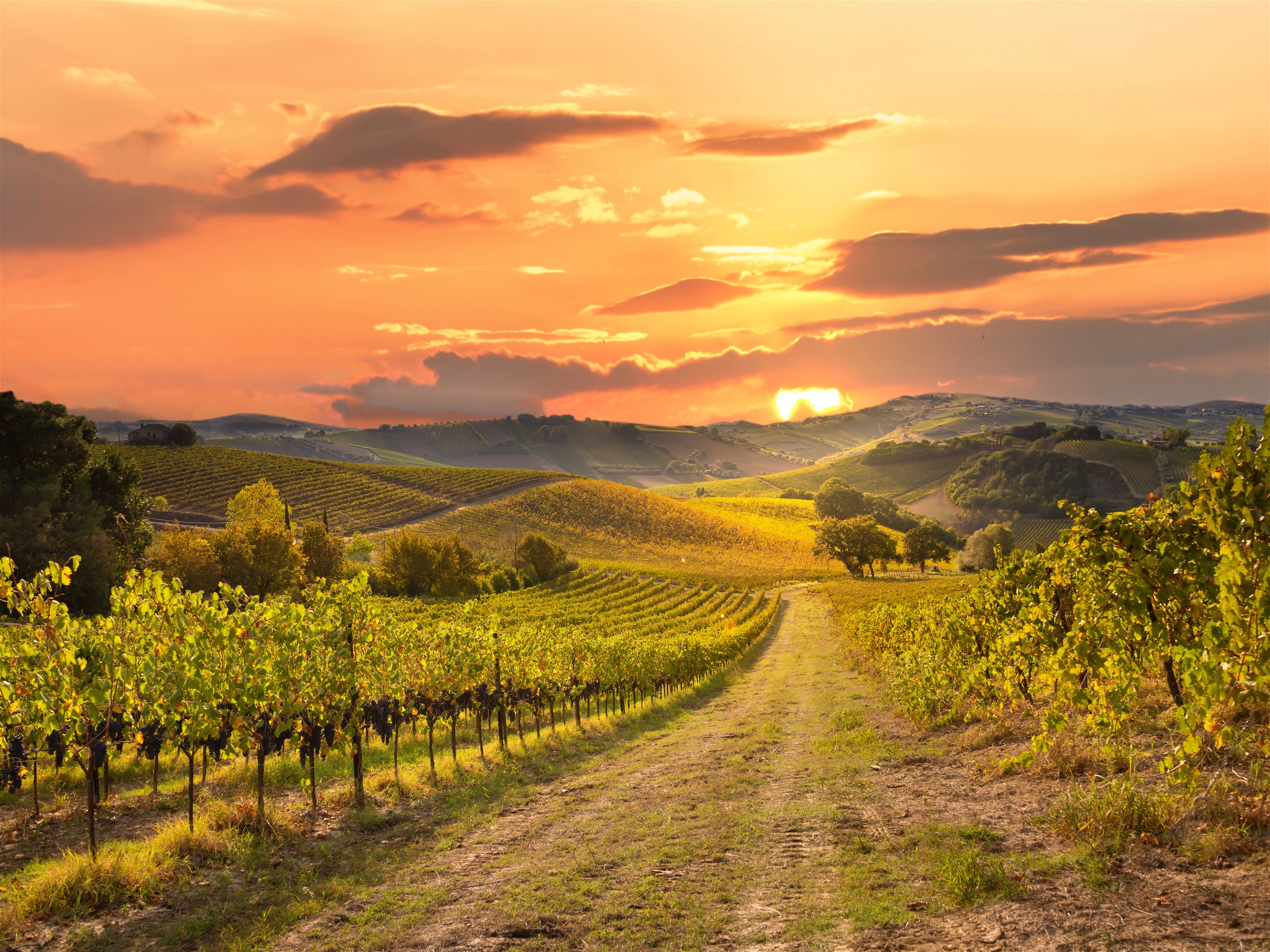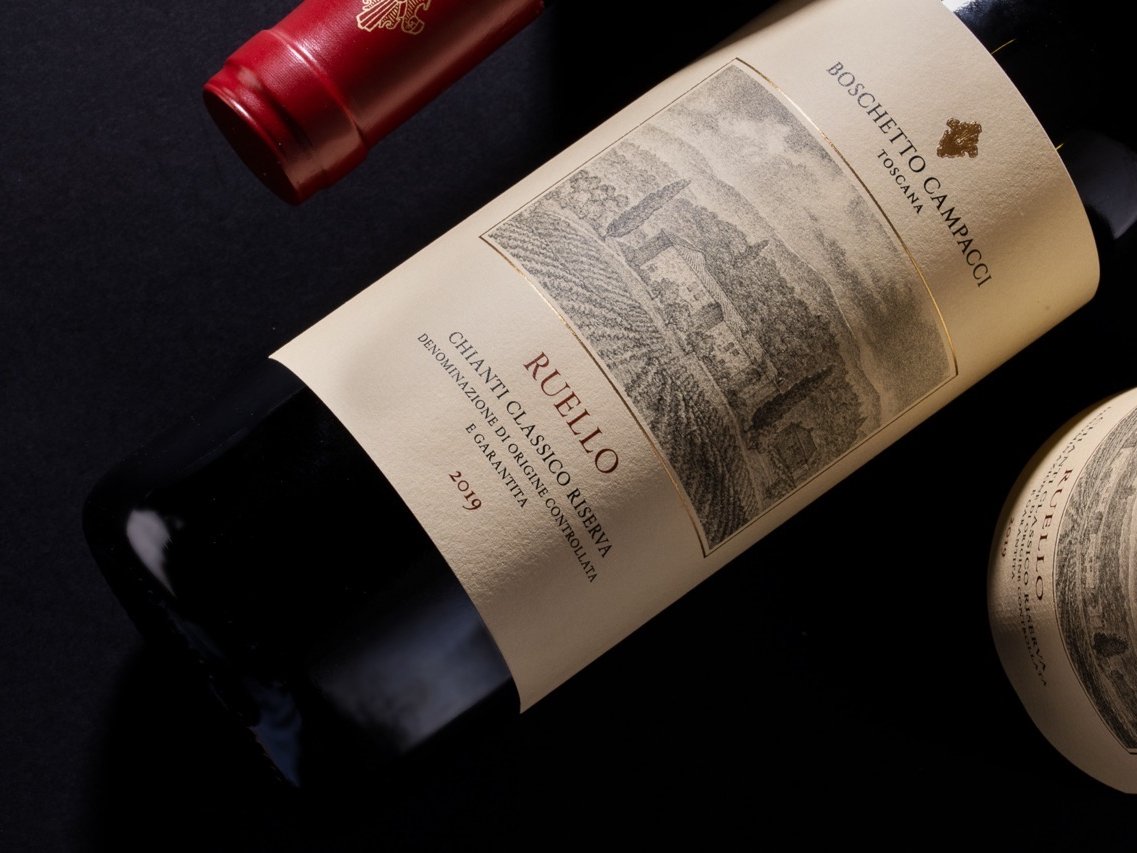Why Châteauneuf-du-Pape is currently experiencing a renaissance
The full-bodied, spicy red wines from Châteauneuf-du-Pape in the southern Rhone Valley are currently experiencing a renaissance. With numerous top wines, including classics as well as many newcomers, the region is blessed with excellent produce year after year, with the 2020 vintage offering superb wines with a great price-performance ratio.
The vineyards of Châteauneuf cover an area of about 3,200 hectares, spread over five communal areas. About half of it is located directly in the village of Châteauneuf-du-Pape on the left bank of the Rhone, after which the entire appellation is named. To the north is Orange with 381 hectares, followed by Courthézon to the north east with 663 hectares; in the east is Bédarrides with 353 hectares, while Sorgues in the south has the smallest share with 128 hectares. The most recent ten-year average production was about 95,000 hectolitres, of which just 5,000 hectolitres were white wine. Two-thirds of the production is exported abroad, 95 percent of the quantities produced come from wineries and private cellars, and five percent of the appellation wines are produced by cooperatives. There are 13 grape varieties permitted for the production of Châteauneuf-du-Pape AOC, but Grenache makes up the majority with about three quarters. Not all wines are cuvées; there are also single-varietal bottlings made from Grenache, Syrah, Mourvèdre and Cinsault. In the vineyards, the composition of the red varieties is currently as follows: 74.5 per cent Grenache noir (of which 2.47 per cent is Grenache blanc), 10.84 per cent Syrah, 6.61 per cent Mourvèdre, 2.57 per cent Cinsault, 0.44 per cent Cunoise, 0.34 per cent Muscardin, 0.13 per cent Vaccarèse and 0.03 per cent Terret. The white wine varieties are as follows: 2.31 per cent Clairette, 1.11 per cent Roussanne, 1.06 per cent Bourboulenc, 0.06 per cent Picpoul, and 0.001 per cent Picardan.
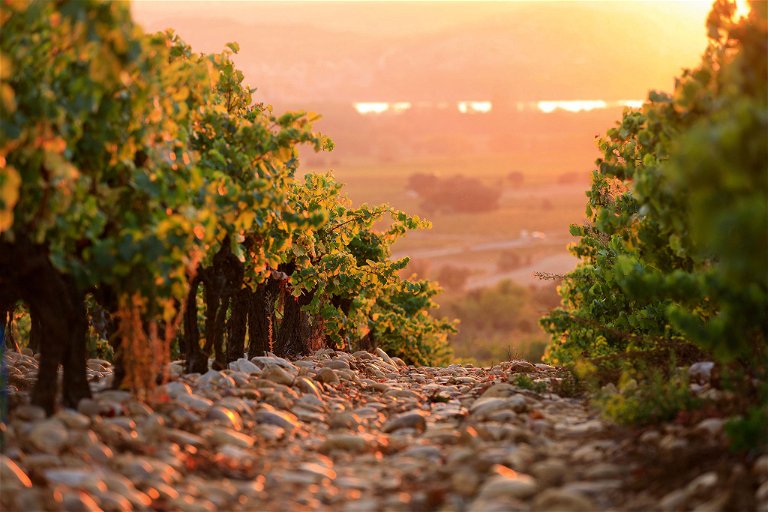
2020 WAS GREAT
Falstaff tasted a good 2,000 wines from the vintage and was suitably impressed: even at this early stage, the wines show themselves to be accessible, juicy and charming. The weather played along, the climatic conditions laying the foundations for a wide range of very appealing wines from this vintage. A winter with plenty of precipitation ensured a basic supply of moisture to the soils continued throughout the entire growing season. Spring was mild, dry and with plenty of sunshine, and so budbreak began relatively early. Flowering was quite even and the conditions for an early harvest were in place: the early summer was dry, and only in June did we get some rain – at exactly the right time – to allow preparation for a warm, but not excessively hot summer; the summer nights brought enough cooling to give the wines a certain freshness. The white wine harvest began at the end of August, followed by Syrah at the beginning of September, and in the middle of the month it was the turn of Mourvèdre and Grenache. There were isolated short rain showers, otherwise sunshine prevailed during the harvest. By the beginning of October, almost all the grapes were in the cellars.
The style of the 2020 is seductive and very accessible. The result of the very good climatic conditions are red wines with a juicy core, a fruity sweetness, elegant texture and good freshness. Depending on the variety dominance, the wines can show more or less spice, the ripe, velvety tannins are striking and even in their youth, the wines showing themselves to be immensely charming and accessible. The fruit component is more on the red berry side than the dark berry side, and thanks to their harmony, they can be enjoyed right away with the alcohol values between 14.5 and 15.5 per cent by volume. Due to their good balance, however, the wines are not perceived as heavy, but rather as full-bodied, and 2020 can therefore be drunk very young. However, nothing stands in the way of an extended ageing period, especially with wines from the northern sandy-limestone terroirs, which are dominated by Grenache, which have an almost Burgundian character. The wines from the deeper soils such as the Galets Roulés with clay subsoil of La Crau are very complex and juicy; these also have tannins for the long run.
LEGENDARY WINES
Some winemakers and cuvées have established the region’s now legendary reputation, with the most sought-after wine of the appellation to this day being Château Rayas, a Châteauneuf-du-Pape of exceptional finesse. In recent years, the wines of the estate have become an object of absolute speculation, with the prices of the wine, which is difficult to obtain anyway, going through the roof at auctions, and in the secondary trade: prices for the great 1990 vintage were already around 4,500 euros. However, the hype seems to have died down somewhat in the meantime. Over the years, growing quality awareness has led to the creation of special cuvées for which the winemakers have selected their best batches and barrels. One of these wines is the Hommage à Jacques Perrin from Château de Beaucastel, which first came onto the market in 1989 (top vintages: 1989, 1990, 1998, 2007, 2010). Hommage of Mourvèdre is only bottled in top years for late-ripening varieties; another legend is Henri Bonneau’s ‘Cuvée des Célestins’ (top vintages: 1970, 1978, 1989, 1990, 1998, 2001, 2007, 2010). André Brunel from the Les Cailloux winery created another myth with their Cuvée Centenaire. Up to 85 percent of these wines come from a Grenache vineyard that is over 110 years old (top vintages: 1990, 2000, 2001, 2012, 2015).
With the 1998 vintage, Domaine du Pégau joined those who offer a luxury cuvée in top years with Da Capo (top vintages: 1998, 2000, 2003, 2007, 2010, 2015, 2016, 2020). In addition, the winery has always produced special cuvées in limited editions and at the highest level, for example on the occasion of the birth of children and grandchildren. The most expensive special wine is the magnum-produced collector’s wine Les Gouttes d'Or from 2016 with only 100 pieces worldwide. Clos du Mont-Olivet is also one of the producers of top cuvées with its Cuvée du Papet. Vintages such as 1990, 2007 or 2010 are unquestionably among the Châteauneuf all-stars.

Myth Rayas
The wines of Château Rayas recently experienced a veritable price explosion.
Château Rayas, whose wines are counted among the best in France, has been in the hands of the Reynaud family since 1880. Among the wines of Châteauneuf-du-Pape, this house enjoys an outstanding reputation. With only 12 hectares, the estate is special in many respects, and while most of the appellation’s wines are composed of a variety of different grape varieties, the red Rayas consists of pure Grenache, which takes up about ten hectares. For many connoisseurs, this is partly responsible for the almost Burgundian touch of the wines. The soils of Rayas consist of clay with a layer of marl and reddish and yellow sands on top. The large, round stones in the gardens, the galettes, so typical of Châteauneuf-du-Pape, are almost completely absent. In this very barren terroir, the vines have to fight hard for their survival. They often have to be replaced, which brings the average age down to about 35 years. The vineyards are surrounded by pine and umbrella pine forests to protect them from the mistral, and many wine lovers think they have detected a hint of pine etherealness in the wine of Rayas as well. The production of the red Rayas is about 16,000 bottles per year, of the white about 5,000 bottles. The style of the great Rayas is characterised by freshness and finesse, which is rarely found in other products of the Châteauneuf-du-Pape appellation. Five to ten years after the vintage, the Rayas begins to reach drinking maturity, with good vintages able to remain at a high level for 20 years, after which you simply have to be lucky in the bottle. Of the current vintages, we advise 2009, 2005, 2001 and 2000; for the mature wines, the 1995 and the extremely expensive cult wine of 1990, although one should currently prefer the tighter and certainly relatively less expensive 1989. The price of the most recently available wine from 2010 is around 1,200 euros. The 1990 is offered in Europe from about 3,200 euros.
